50+ Sample Career Development Plan
-
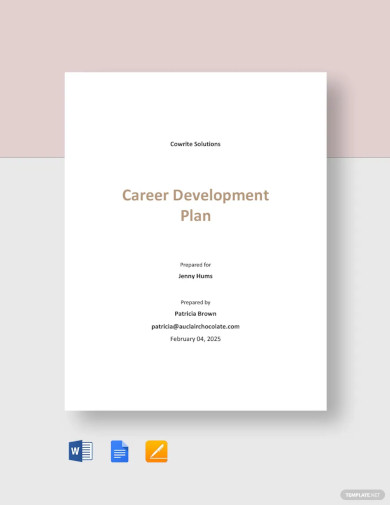
Career Development Plan Template
download now -
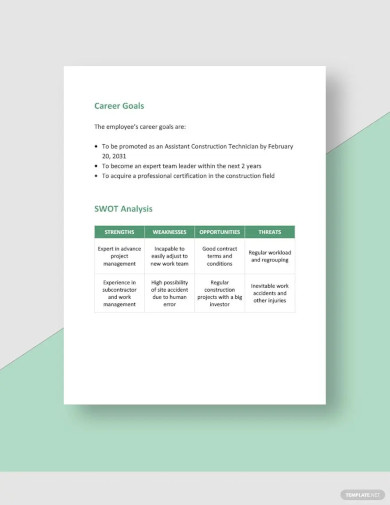
Employee Career Development Plan Template
download now -

Simple Career Development Plan Template
download now -
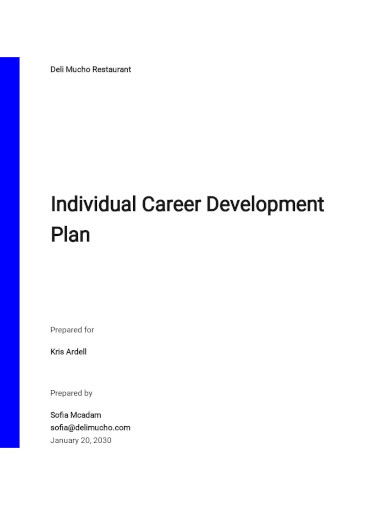
Individual Career Development Plan Template
download now -
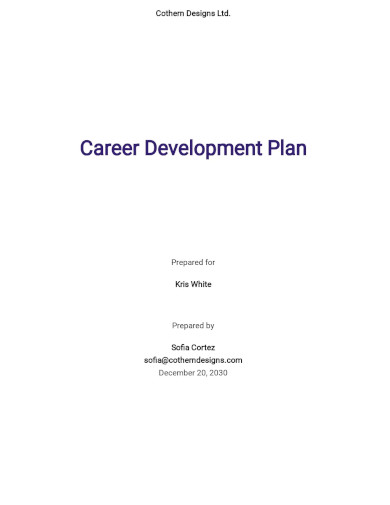
Sample Career Development Plan Template
download now -
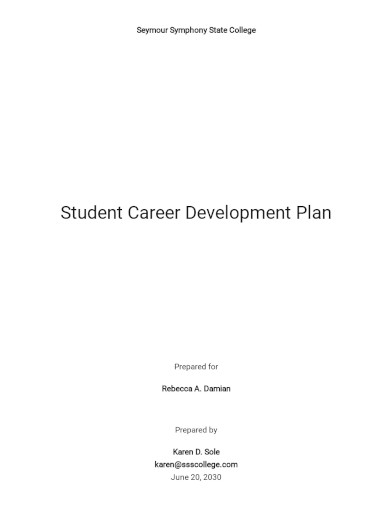
Student Career Development Plan Template
download now -
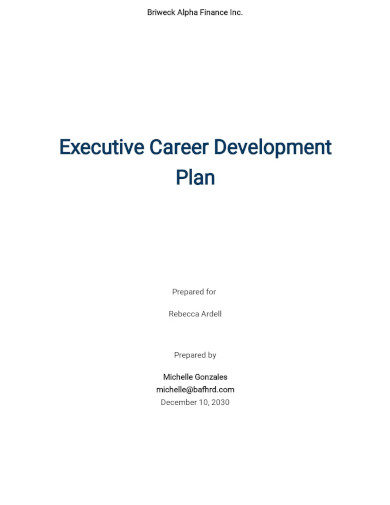
Executive Career Development Plan Template
download now -
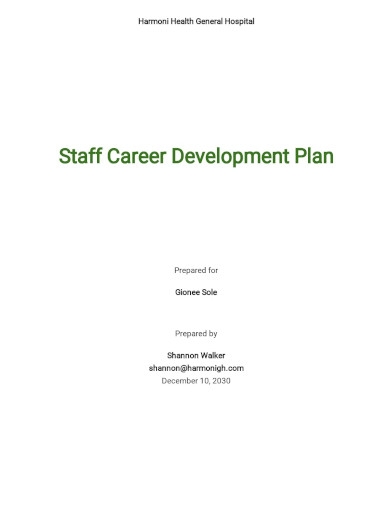
Staff Career Development Plan Template
download now -

Free Company Career Development Plan Template
download now -
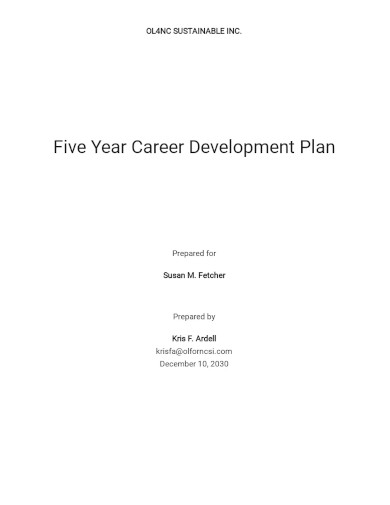
Five Year Career Development Plan Template
download now -

Career Personal Development Plan Template
download now -
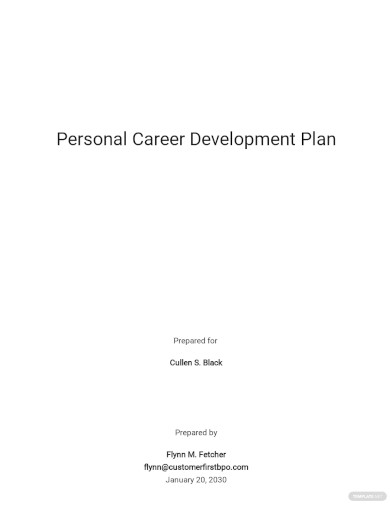
Personal Career Development Template
download now -
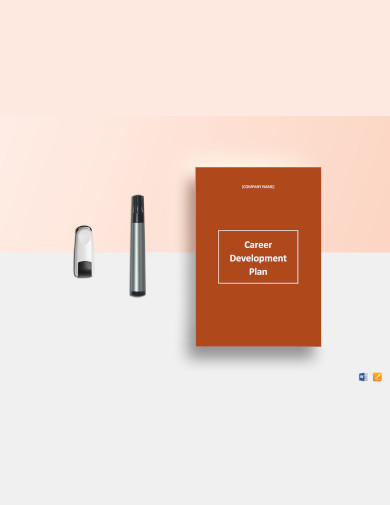
Basic Career Development Plan Template
download now -

Career Development Plan
download now -
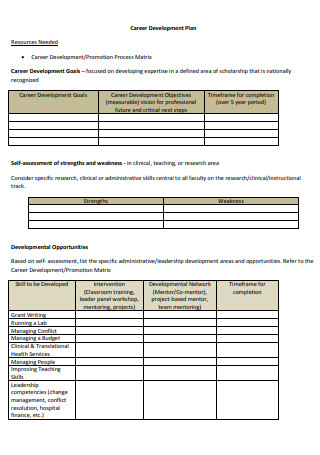
Sample Career Personal Development Plan
download now -
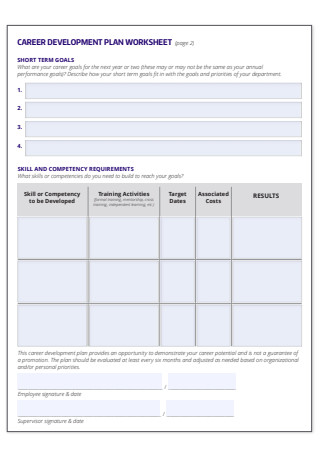
Career Planning Development Plan Worksheet
download now -
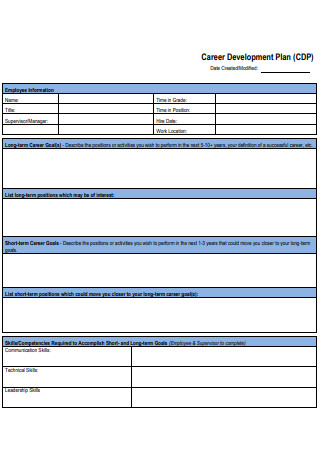
Basic Teacher Career Development Plan
download now -
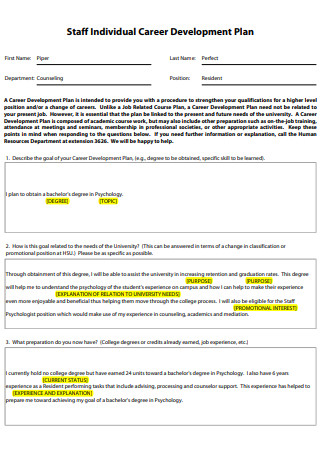
Staff Individual Career Development Plan
download now -
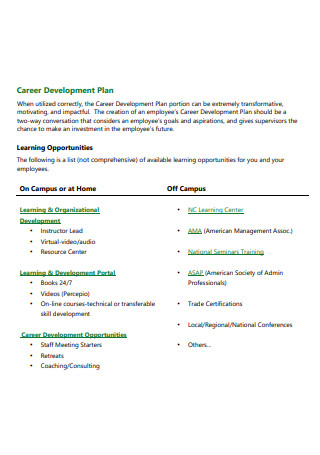
Simple Project Manager Career Development Plan
download now -
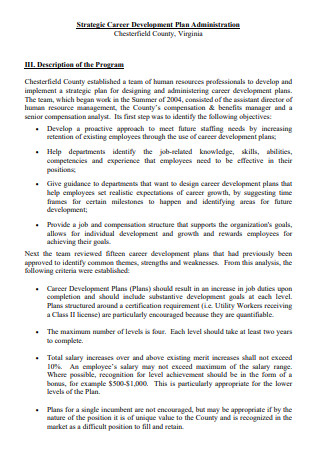
Strategic Career Development Plan Administration
download now -

Self Assessment Career Development Plan Example
download now -
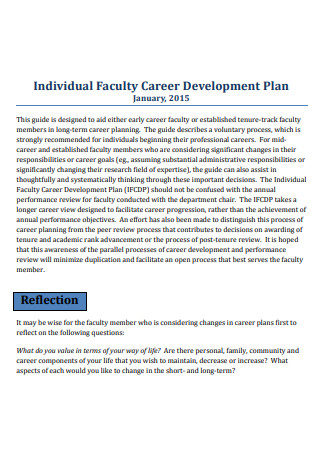
Individual Faculty Career Development Plan
download now -
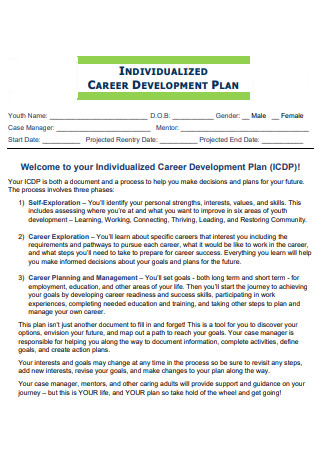
Individualized Leadership Career Development Plan
download now -
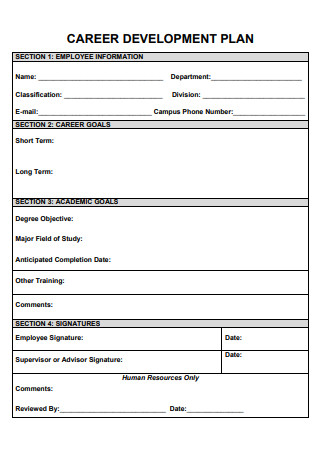
Formal Succession Planning Career Development Plan
download now -
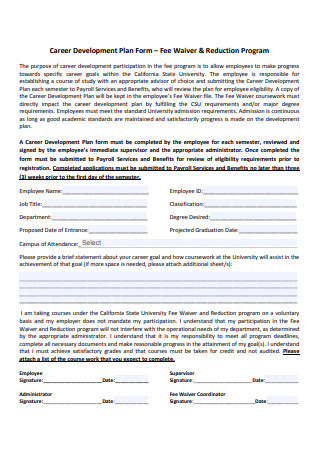
5 Year Career Development Plan Form
download now -
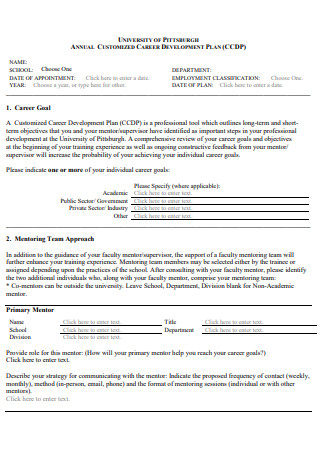
Annual Customized Career Development Plan
download now -
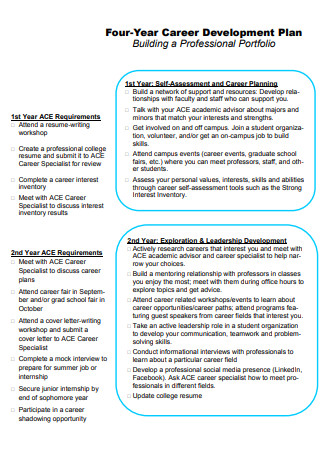
Four-Year Education Career Development Plan
download now -
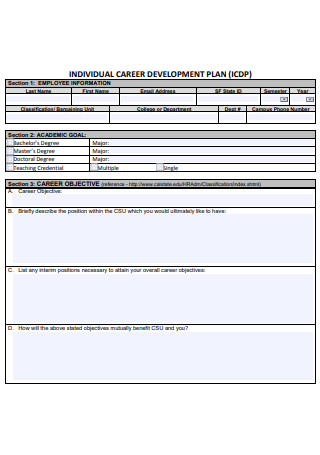
Individual Short Term Career Development Plan
download now -

Career Development Essay Action Plan
download now -
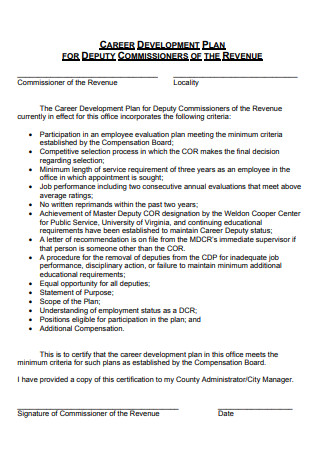
Career Development Plan For Deputy Commissioners
download now -
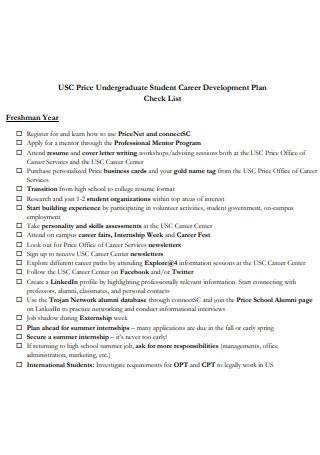
Undergraduate Student Career Development Plan Checklist
download now -
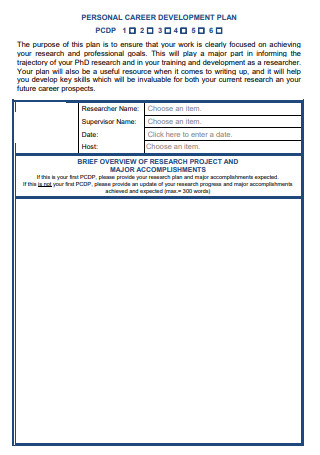
Administrative Assistant Career Development Plan
download now -
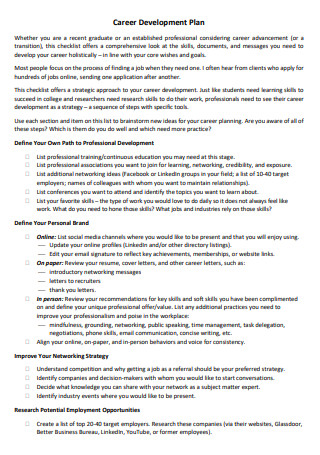
Customer Service Career Development Plan in PDF
download now -
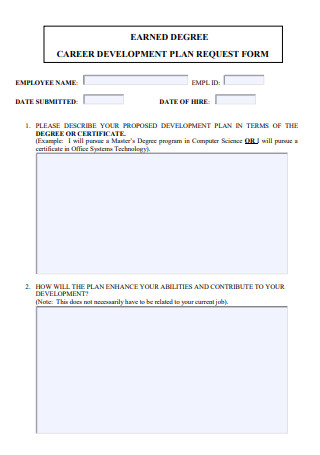
Career Development Marketing Plan Request Form
download now -

Business Analyst Career Development Plan
download now -
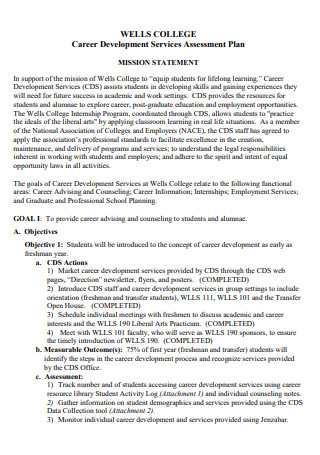
Career Development Services Assessment Plan
download now -
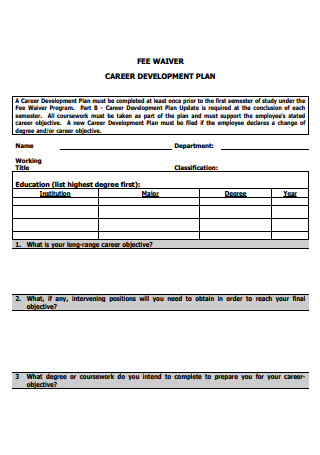
Nursing Career Development Plan
download now -
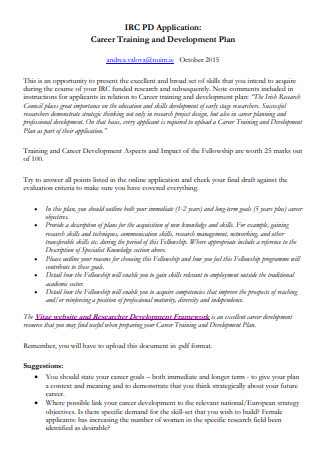
Software Engineer Career Training and Development Plan
download now -
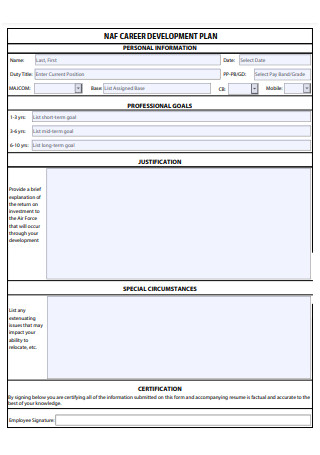
Long Term Career Development Plan Format
download now -

Finance Career Development Plan Checklist
download now -
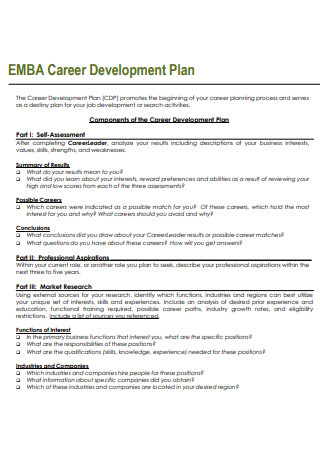
Standard Career Development Plan Outline
download now -
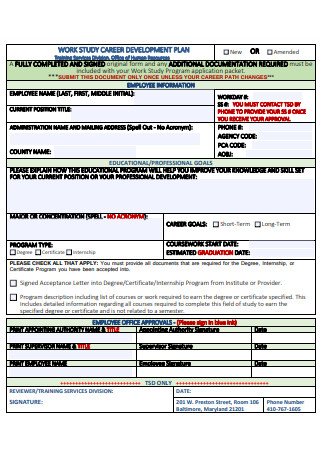
Work Study Career Development Plan
download now -
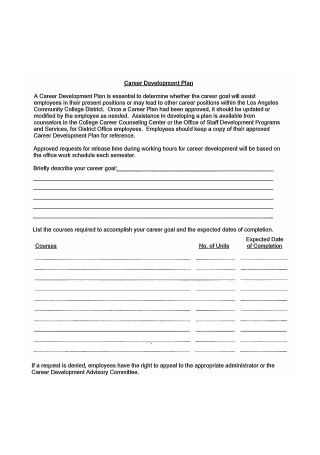
Printable Career Development Plan
download now -
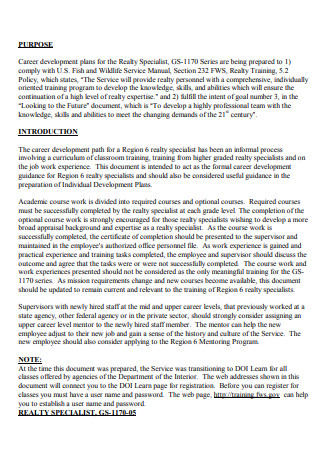
Specialist Career Development Plan
download now -
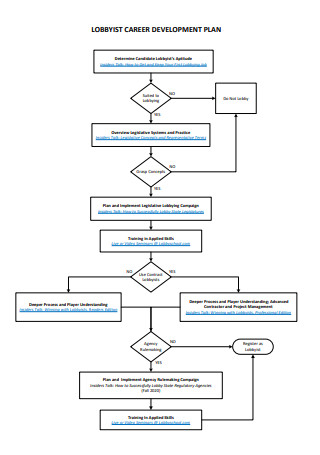
Career Development Plan Flowchart
download now -
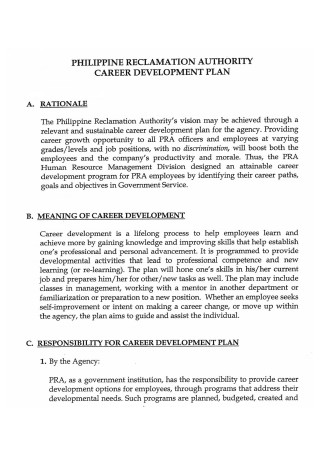
Authority Career Development Plan
download now -
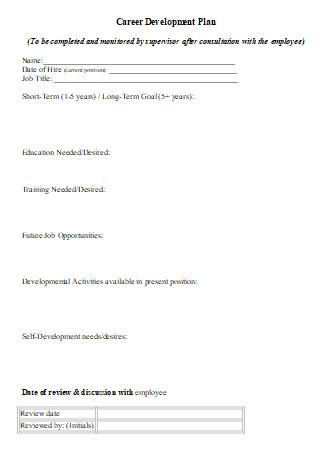
Employee Career Development Plan
download now -
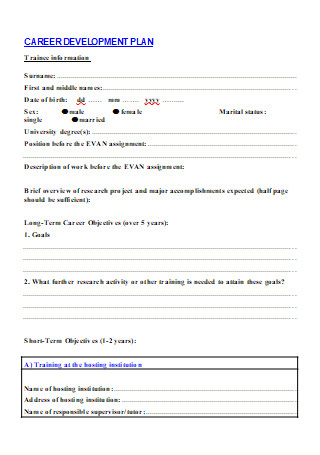
Career Development Plan in DOC
download now -

Draft Career Development Plan
download now -
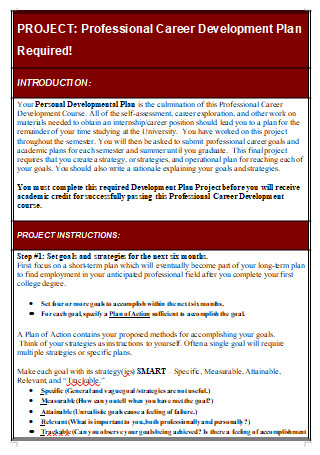
Professional Career Development Plan
download now -
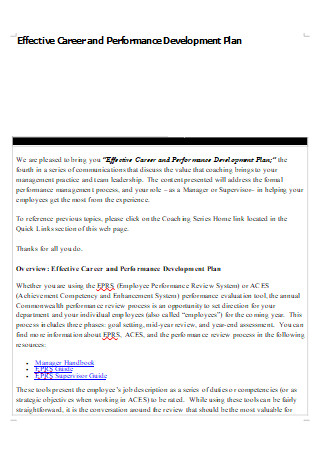
Effective Career and Performance Development Plan
download now
FREE Career Development Plan s to Download
50+ Sample Career Development Plan
What Is a Career Development Plan?
Methods of Career Development
Components of a Career Development Plan
How to Create a Career Development Plan
FAQs
What is the purpose of a career development plan?
Why should you invest in your employees?
What are SMART goals?
What Is a Career Development Plan?
A career development plan is a detailed list of the short-term and long-term goals an employee has. The account concerns the worker’s present and future careers goals, together with an organized sequence of experiences that assists employees in fulfilling their dreams. These objectives must rely on the individual’s strengths and capabilities. Proper career planning focuses on a person’s definition of their personal and professional goals concerning possible future professions in their career. Remember that career planning is centered around the employee and their potential and not around the company. However, despite being employee-centered, the work relies on both parties and benefits both in the long run. A career development plan doesn’t stop at a single planning stage but must be updated throughout an employee’s career.
Based on LinkedIn’s resource report entitled 2018 Workplace Learning Report, roughly 94 percent of employees would stay at their present company and current jobs if it invests in their career path. However, it proves to be challenging for employees to find opportunities to focus on developing their careers because of time constraints.
Methods of Career Development
As it is a life-long and continuous process, career development is a growing and everchanging manner that provides employees with a plan about their growth and development in their careers. Below are the methods of career development that are essential to all workers.
Components of a Career Development Plan
An effective career development plan must actively involve the human resource department to develop an efficient system for the organization. A combination of individual career planning and organizational career management achieves the best result, and it is what most organizations use in their career planning strategies. Below are the components of a career development plan.
How to Create a Career Development Plan
In the beginning, creating a career development plan may be a daunting task, especially if it is the first time. Do not fret because once you have a clear picture of where to start, it will be an easy process. Just remember that a career development plan involves a starting point, destination, potential obstacles, and an ideal route. Below are the steps that can help you create a comprehensive career development plan for your employees.
Step 1: Identify Employees Ready for Career Enhancement
Start your plan by creating an employee list of potential candidates for advancement. These employees are your high performers or those that showed their passion, grit, and potential in the job they are performing. It is helpful to get advice from team managers or project heads to support your list of employees that will benefit in the career development process. Remember that not all employees are ready to have a career development plan. Underperforming employees gain more from performance improvement plans because it focuses on improving their current competencies. Once the employee list is complete, you can proceed in tailoring a system suitable for each candidate.
Step 2: Meet With Employees and Set Expectations
Upon completion of the list of employees, it is necessary to inform them of the standard process. Alert them by sending an email letter or booked schedule on the company calendar for a quick meeting to go over the plan you intend to implement for their development plan. The first meeting should go over an in-depth consultation with the employee that goes over everything written. After that, schedule another appointment a week or two after the initial to give the employee time to prepare. It is necessary to ask what the employee plans on doing 1-3-5 year plan. Also, inquire about their dream role and ask for a job description of the position. Allow them to include ideas that will benefit their career and ask any further questions about the plan.
Step 3: Personalize the Plan According to the Employee
It is essential to tailor the plan based on the particular employee. Begin by identifying the professional and personal goals for the employee to attain their full potential, whether short-term or long-term. Remember that they must stay close to their respective roles and experiences. In the plan, you can recommend seminars to attend, new skills to learn, new projects to work on, certifications to get, and other opportunities. No two career plans are the same since employees have different backgrounds, experiences, capabilities, and aspirations.
Step 4: Welcome the Idea of Revisions
Certain situations may arise from creating a career development plan. One of them is an employee deciding that they want a different career path from the initial idea. The employee must put much thought into the idea of transitioning from one career to another. Even so, you can still work with a career development plan for them. If an employee decides to shift to a different career path, it is best to obtain proficient input from the department. Prepare a generic list of ideas and career development smart goals for the revision of the current plan. In this way, you can continue to work with restructuring the program to fit the employee’s current career aspirations.
Step 5: Create and Follow Through an Actionable Plan
After finalizing the career development plan with an employee, it’s necessary to get things started. During the plan’s implementation, allow your employees to come and approach you to discuss ideas or update you on their progress. You serve as a resource for them to explore their interests further towards their career goals. Take the initiative in meeting your employees to show you care about their development. Track the progress of each employee undergoing career development and update managers on their progress. Your words may not guarantee their job promotion or salary increase, but you can put in a good word to people that can make it happen.
FAQs
What is the purpose of a career development plan?
The principal purpose of a career development plan is to assist employees in achieving their professional and personal goals. An organization also increases the possibility of retaining employees because they realize the employer and the management recognize their needs and help them to reach their goals. Even though a career development plan is optional, it is commendable to offer your employees the opportunity to improve their skills. It shows the company realizes its short-term and long-term goals and objectives, supported and aligned with managers, making sure they are achievable.
Why should you invest in your employees?
Employees leave their professions and companies from feeling undervalued and lacking professional development plan and growth opportunities. Do not let your skilled and experienced employees leave the company. Find the time and resources to invest in your employees’ career development to keep them around longer, keep them happy and appreciated, and help them better their skills to improve their performance.
What are SMART goals?
In every goal-setting arrangement, it is necessary to keep in mind the use of SMART goals. SMART stands for specific, measurable, achievable, relevant, and time-bound and serves as a guide. Incorporating SMART into professional or personal goals helps create a clear, attainable, and meaningful goal that leads an individual’s motivation, action plan, and support they need to fulfill the objective.
A career development plan is essential in any organization. It benefits the employee, not only in achieving their professional goals but also their personal goals. For the organization, it reduces the turnover rate of employees and allows a positive relationship with them. It is necessary to offer the plan to all viable employees as it gives them room for growth and development that improves their skills and aids with production and quality of work. In the words of Jack Welch, the CEO of General Electric, “Before you become a leader, success is all about growing yourself. After you become a leader, success is about growing others.” For a company to succeed, establishing a positive culture and relationship between employees and employer is essential. Help your employees grow by using and downloading career development plan samples found above.
